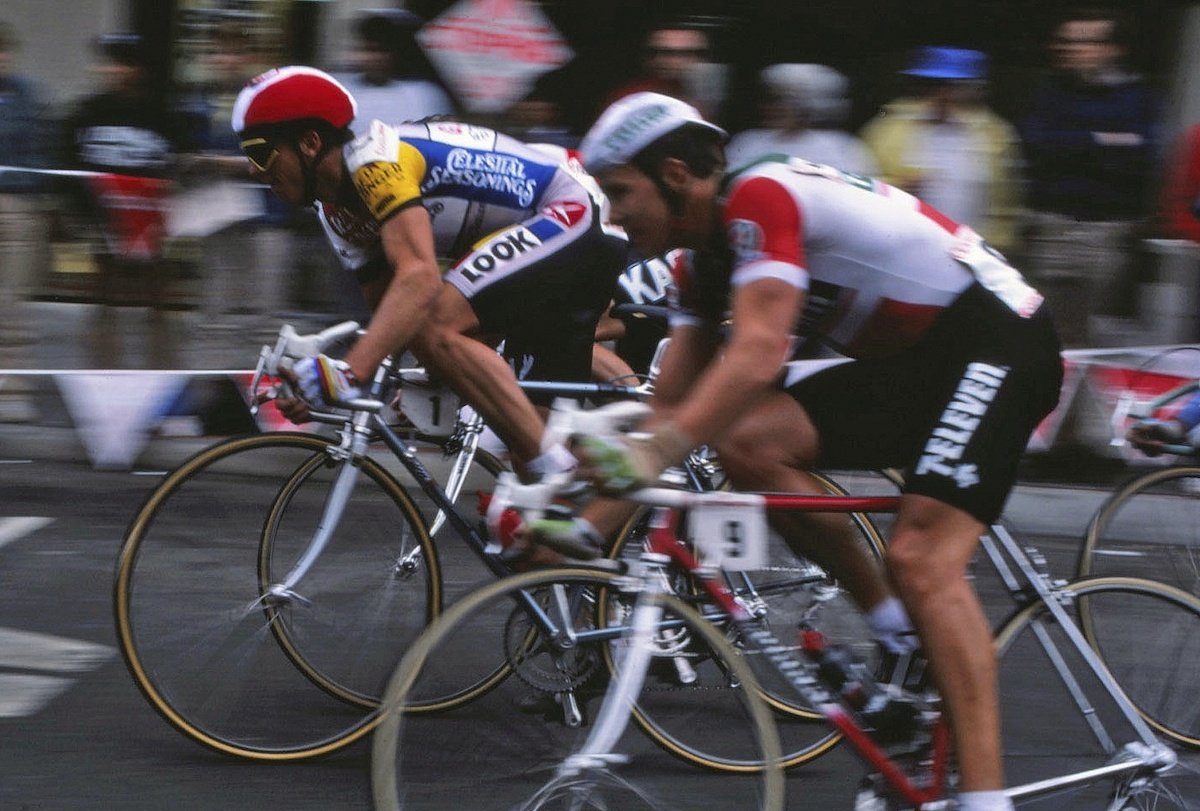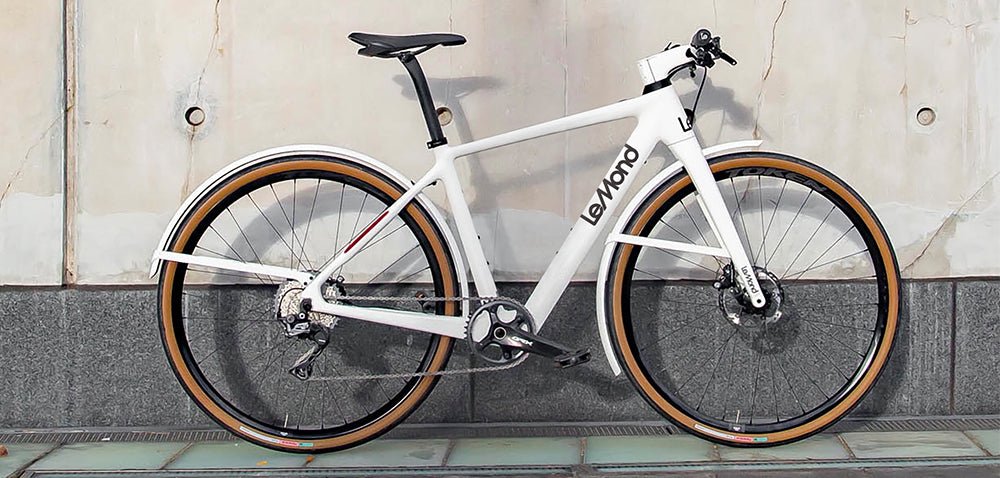Greg LeMond: From Tour de France Domination to E-Bike Innovation
For many, the sight of seeing Greg LeMond on an e-bike may come as a surprise.
“I would ride an e-bike every day over a mechanical bike only because I’m not in shape like I used to be, but I also like going fast,” said LeMond. “It makes me feel like I’m riding like a pro.”
LeMond knows all about being a pro. He’s one of the biggest names in U.S. cycling, winning the Tour de France three times. The biking legend has had a long journey through cycling and is now focused on creating bikes for everyone else. He explains how his professional career has shaped his modern view on bicycles.
Finding a Passion for Cycling
As a kid, LeMond’s family moved from Los Angeles to Lake Tahoe, igniting his love for the outdoors. Growing up in the mountains, his childhood was full of outdoor sports, but skiing is what first held his attention. When it came to the offseason, he was encouraged to continue training by riding a bike, which he took up with his father. Biking quickly turned from an exercise to a passion.
“It was really kind of the first time I really felt the physical effort, getting exhausted, but really feeling those endorphins,” said LeMond. “I think cycling was always about that to me. I could go see something right up around Lake Tahoe. I mean, you could drive in a car, but riding a bike, there’s just nothing like it.”
LeMond was glued to life on two wheels and joined a local racing club. He quickly became a dominant team member, winning his first 11 races. He was hooked.
LeMond made his way to Europe to compete against some of the best riders in the world. He says the move made him rethink the roles of Americans in the cycling world.
“At that time, Americans thought the Europeans had something, you know, genetically different. I went there and realized, you know, everybody’s my age when they start, and I was winning all these races against really good riders, and I thought, why couldn’t I think about the Tour de France?” said LeMond. “During that first trip, I got to see the Tour de France. That was a pivotal point. It was 1978.”
LeMond would win the famed race eight years later, becoming the first American to do so.

Bringing the Tour de France Home
LeMond says the race is inspiring and motivates new riders every year to get into the sport.
“They saw (the Tour de France), got on a bike, and they’re still riding today, which is really cool,” said LeMond. “It’s a great sport, and they usually are into it for life, which is good.”
While his win in 1986 was significant, LeMond says he feels his bigger win was his second in 1989. This championship came after he recovered from a hunting accident—a significant setback that took him out of training and off any cycling team.
The road to recovery wasn’t easy; it took him from the front to the back of the pack. Even after winning the Tour de France in 1989 and 1990, LeMond says he didn’t feel 100% until 1991. Unfortunately, that’s also when the sport shifted, leading toward the end of his professional cycling career.
Often credited with bringing the Tour de France to the mainstream U.S. audience, LeMond says his win came at the right time. Cycling had grown exponentially in the U.S. in the 1970s and ‘80s with an increase in gas prices. To meet the demand for bikes, companies like Cannondale, Trek, and Specialized all launched in the 1970s. On top of that, fans in the U.S. could now watch the race on American television.
“That’s when everybody started learning about doping, and the sport just took a dramatic switch,” said LeMond. “To me, that’s still kind of a bittersweet, but almost a traumatic experience because you go from winning it, and I actually look at my performance in the first two weeks of the ‘91 tour as the best rider in the race, but I could barely finish.”
LeMond says it got worse every year as more and more riders allegedly turned to performance-enhancing drugs. He eventually stepped away from professional racing, but his passion for riding would continue by designing bikes for the masses.

Focus on Modern Bikes
After his first Tour de France win in 1986, LeMond began building his bikes to choose the right components and pieces he believed would perfect his ride. A big part of this is using carbon fiber, a robust material known to be very lightweight.
LeMond went into business with Trek, but a falling out with the company made LeMond feel burned out. That passion was reignited after an experience with e-bikes.
While in Europe following a car accident that broke his back, LeMond tried out an electric bike to see how it would feel. The added mechanics allowed LeMond to do what he loved most. He was cycling again.
“I just broke my back in a car accident, so I was totally out of shape,” said LeMond. “But what was great about it was I got on an e-bike, and I felt like it was in really good shape and it made it enjoyable.”
Combining this experience with the e-bike’s explosive popularity abroad led LeMond to refocus his company’s offerings on an electric design.
“It gives the rider the sensation they’ve been riding a very long time,” says LeMond, explaining that the inertia added by the pedal assist brings that continued flow that allows strong riders to ride further and longer, but now just about anyone could experience it.
“I always believe that getting people on bikes is really so important for their health and fitness,” said LeMond. “And contrary to what everybody thinks about e-bikes, you can work out just as hard on an e-bike as you do a mechanical bike.”
The company, LeMond Bikes, currently has two designs on the market. Both of them are lightweight designs that come in under 30 lbs., an impressively low number compared to other e-bikes that can weigh hundreds of pounds. Multiple reviews including Cycling Weekly and Wired cite the lightweight formfactor as a reason to buy. LeMond says lightweight is important, because it allows riders to pick up their bikes and store them in apartments or wherever needed.
LeMond says the e-bikes have changed his daily riding, and he’s now joined more often by his wife, who appreciates the multiple levels of electronic assist. He hopes the design will allow more people to get into cycling.
“Most people think I should be a purist, and I should only ride mechanical (bikes). I think it’s really selfish,” said LeMond. “I’m not going to go riding with my friends and try to be competitive on an electric bike while they’re riding a mechanical bike. But the broader public that you bring to bikes with e-bikes is so worth it. There are such health benefits to being on a bike.”
LeMond says he’s now focused on designs and bike offerings that come in at a lower price point to help the company’s popularity continue to grow.
Video – Greg LeMond on how e-bikes can help enhance the joy of cycling:







